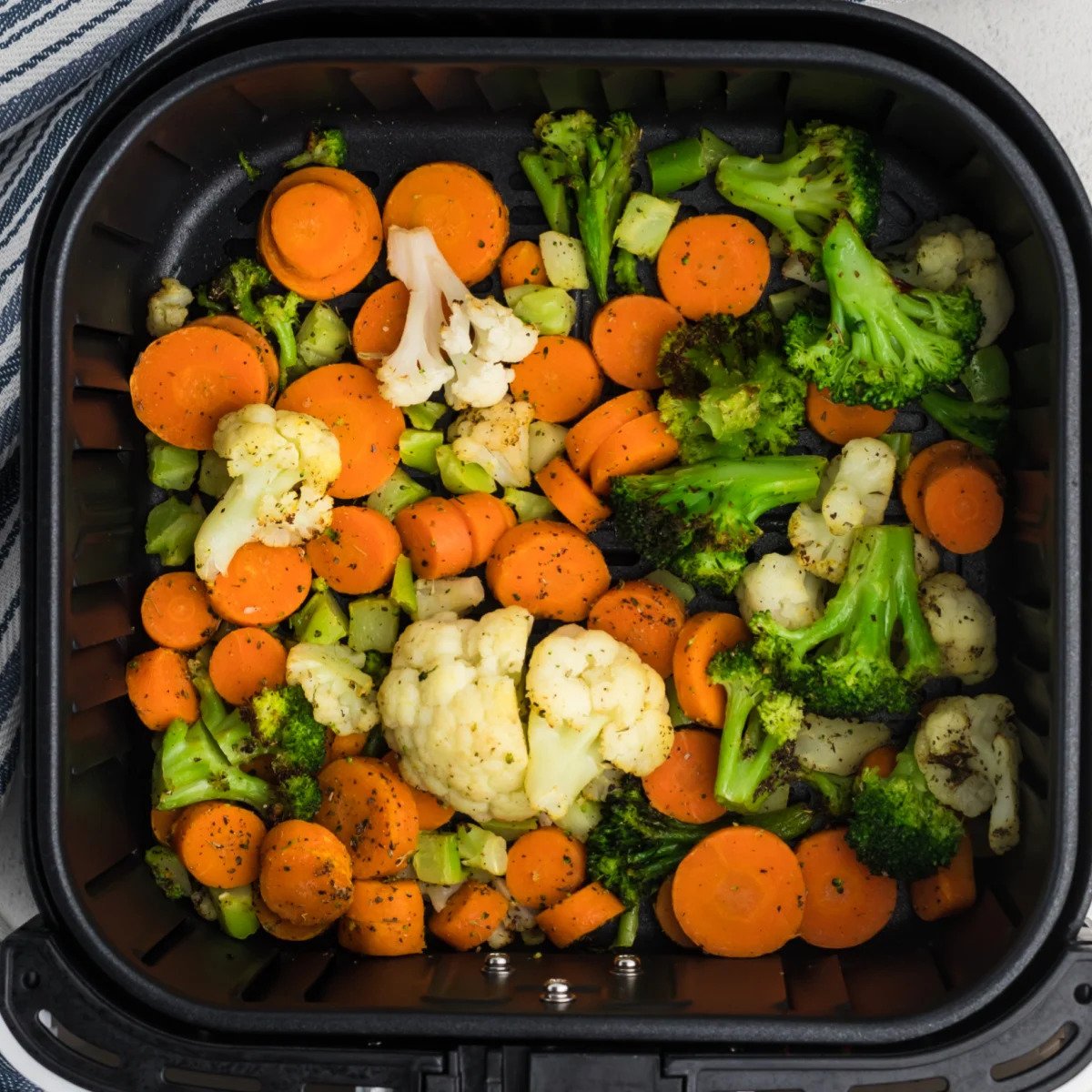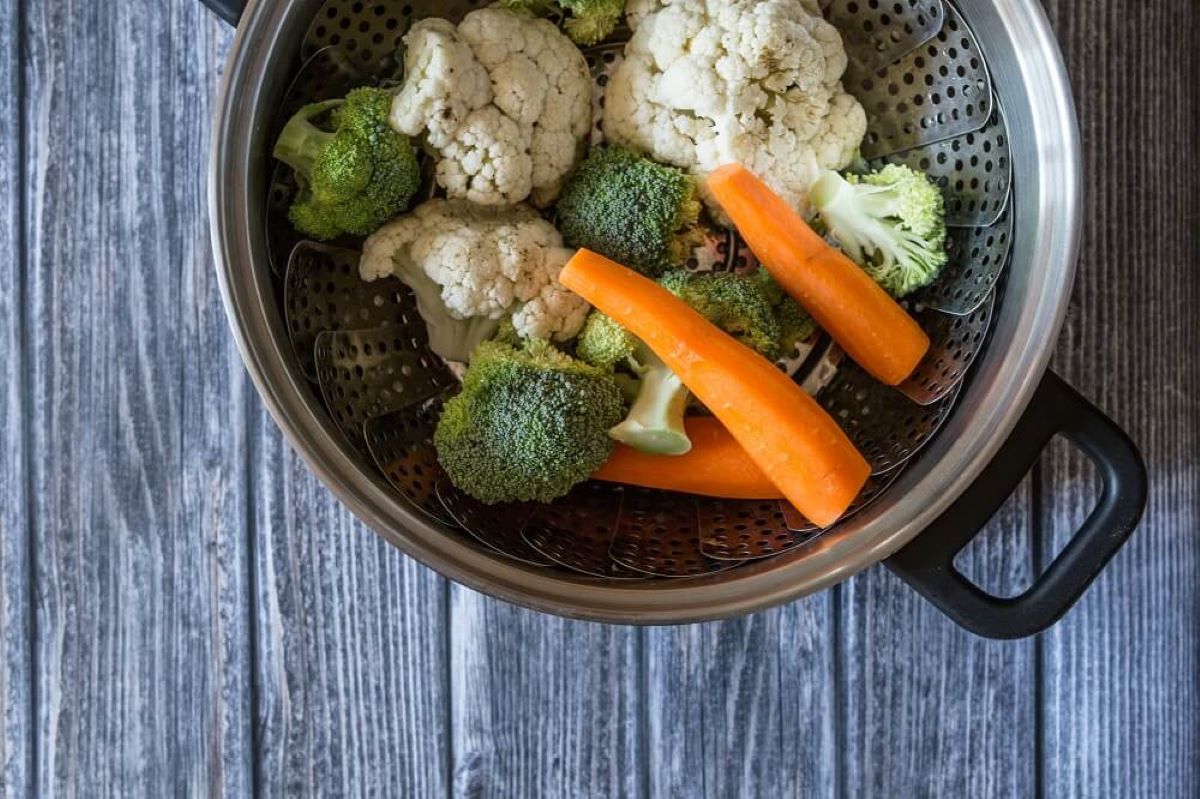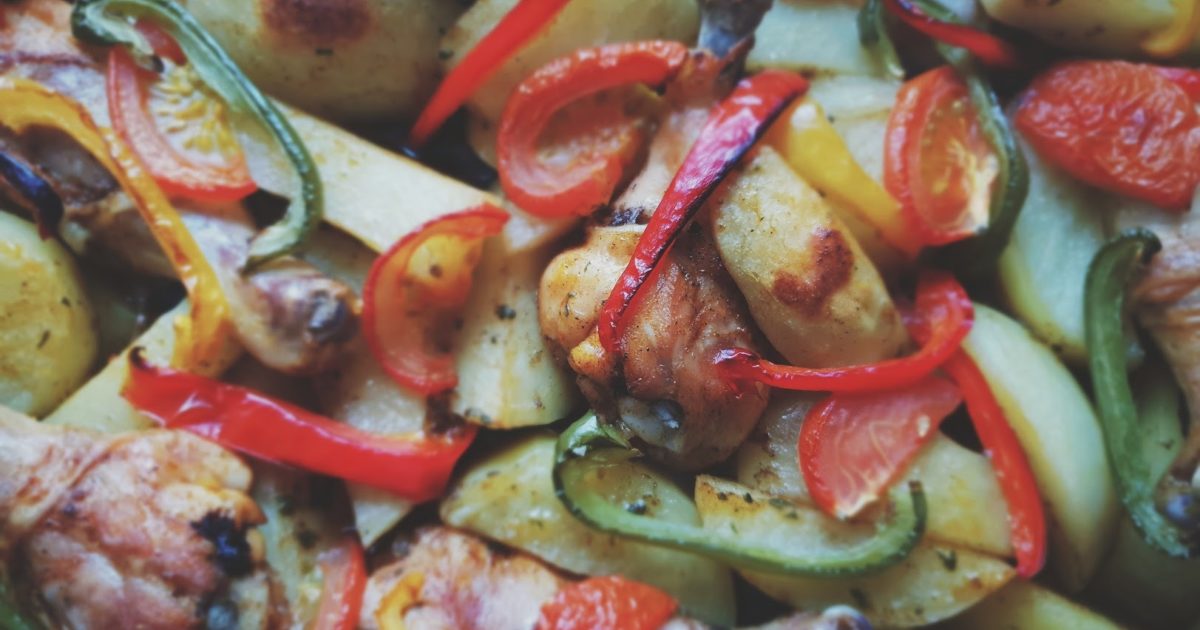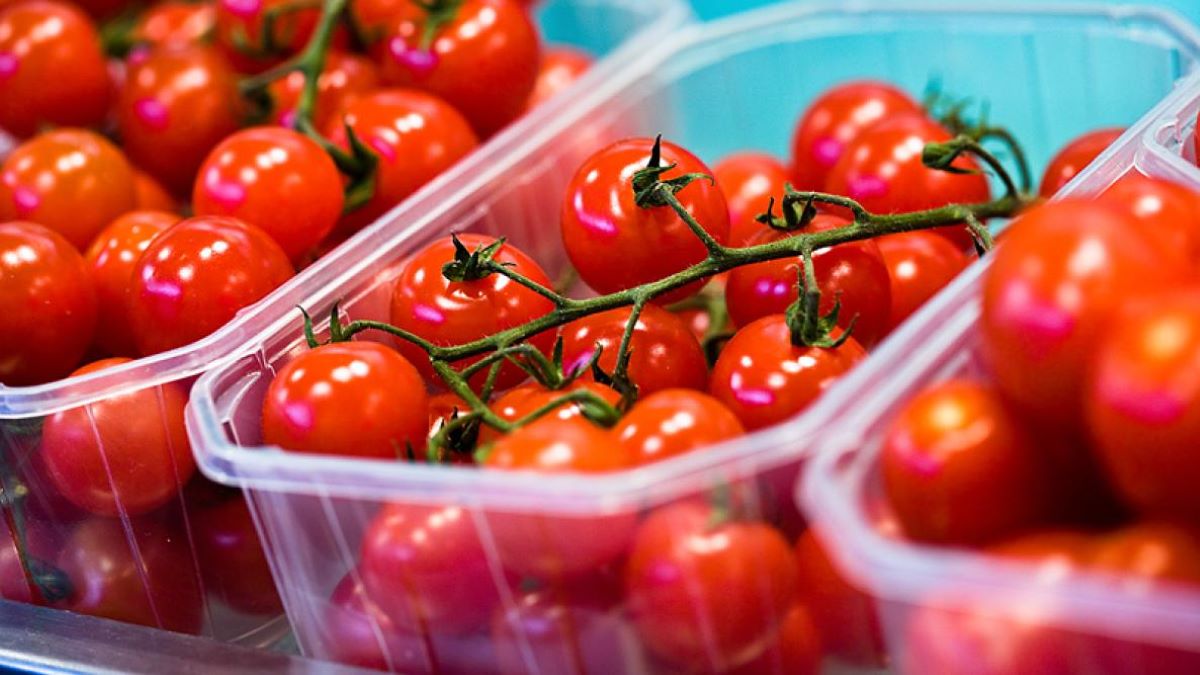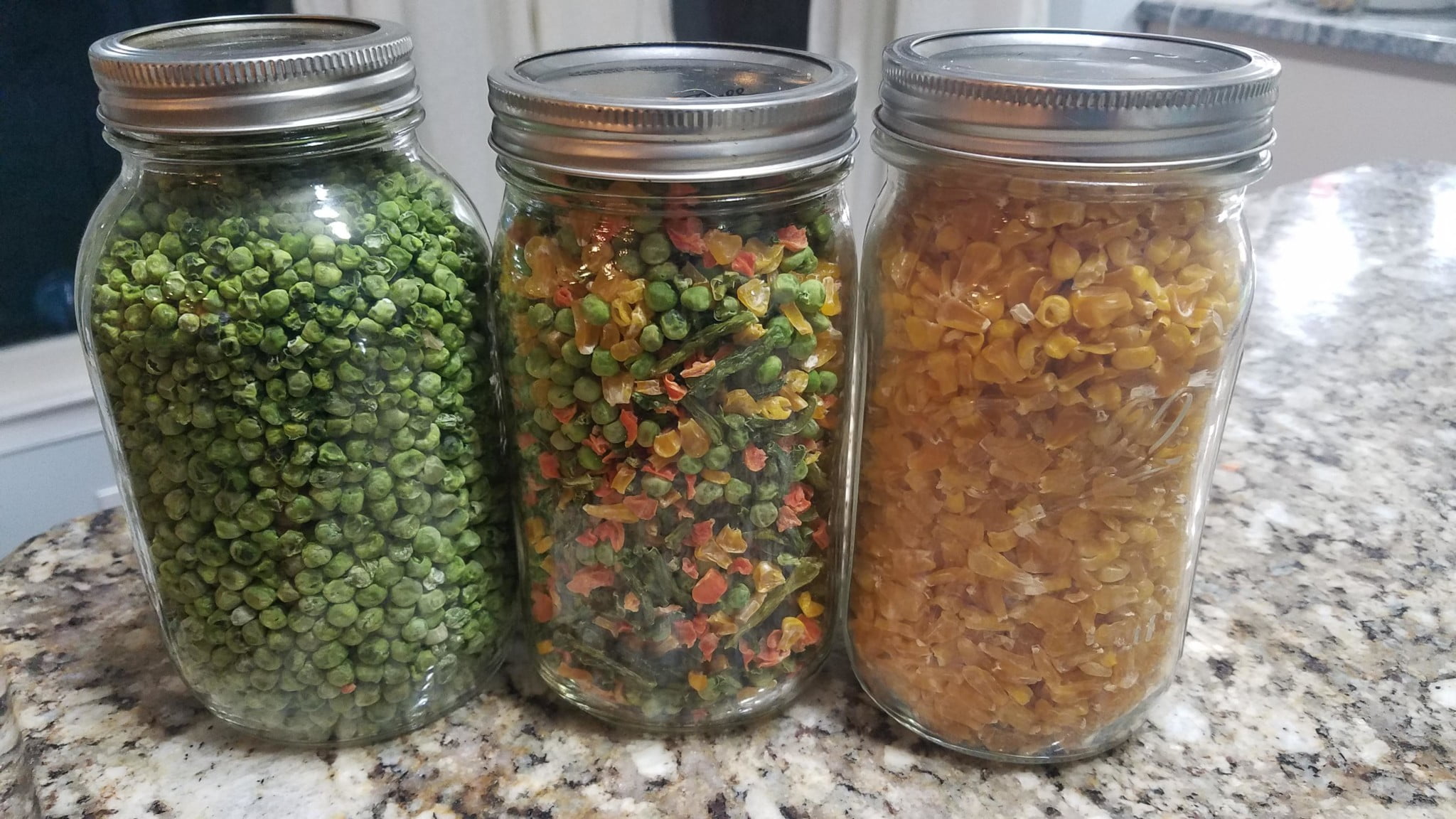Home>Gardening News and Trends>Latest News>How Long To Cook Vegetables In Crock Pot


Latest News
How Long To Cook Vegetables In Crock Pot
Modified: January 22, 2024
Discover the latest news on how long to cook vegetables in a Crock Pot. Find the perfect cooking times and tips for your favorite veggies, all in one place!
(Many of the links in this article redirect to a specific reviewed product. Your purchase of these products through affiliate links helps to generate commission for Chicagolandgardening.com, at no extra cost. Learn more)
Table of Contents
Introduction
Cooking vegetables in a crock pot is a convenient and time-saving method that can yield delicious and nutritious results. This slow cooking technique allows the flavors of the vegetables to develop gradually, resulting in tender and flavorful dishes. Whether you’re a busy professional, a parent with a hectic schedule, or simply someone who wants to enjoy a hassle-free cooking experience, using a crock pot to cook vegetables is a fantastic option that can simplify your meal preparation process.
The crock pot, also known as a slow cooker, is a countertop appliance that is designed to cook food at a low and steady temperature over a long period of time. This gentle heat allows the vegetables to slowly break down, resulting in a soft and melt-in-your-mouth texture. In addition, cooking vegetables in a crock pot helps to preserve their nutrients and natural flavors, making it an excellent cooking method for those who want to maintain a healthy and balanced diet.
One of the major benefits of cooking vegetables in a crock pot is the convenience it offers. Simply chop your vegetables, add them to the crock pot along with any seasonings or liquids, set the temperature, and let the pot do the work for you. This means less time spent hovering over a stove and more time to focus on other things. Whether you’re a working professional coming home to a hot meal, or a busy parent trying to juggle multiple tasks, using a crock pot to cook vegetables can save you time and effort in the kitchen.
Not only is cooking vegetables in a crock pot convenient, but it can also result in incredibly flavorful dishes. The slow cooking process allows the vegetables to release their natural juices, which then combine with any seasonings or spices to create a delicious and aromatic broth. This means that even simple vegetables can be transformed into a tasty and satisfying meal with minimal effort. Whether you prefer a hearty vegetable stew, a creamy vegetable curry, or a flavorful side dish, the crock pot can help you achieve mouthwatering results.
So whether you’re a seasoned chef or a beginner in the kitchen, cooking vegetables in a crock pot is a fantastic cooking method that offers convenience, flavor, and nutritious results. In the following sections, we will explore the benefits of using a crock pot to cook vegetables, general guidelines for cooking vegetables in a crock pot, specific cooking times for different vegetables, and some tips to ensure success in your crock pot vegetable cooking adventures.
Benefits of Cooking Vegetables in a Crock Pot
Cooking vegetables in a crock pot offers several benefits that make it an appealing cooking method for home cooks. Here are some of the key advantages:
- Convenience: One of the greatest benefits of using a crock pot for cooking vegetables is the convenience it provides. Simply prep your vegetables, add them to the pot along with desired seasonings and liquids, set the temperature, and let it cook slowly and unattended. This allows you to save time and energy while still enjoying a delicious and nutritious meal.
- Flavorful results: Slow cooking in a crock pot allows the flavors of the vegetables to develop and intensify. The low and steady heat helps to tenderize the vegetables and extracts their natural juices, which then mingle with the other ingredients in the pot. This results in a rich and savory flavor profile that can make even the simplest vegetables incredibly tasty.
- Nutrient retention: When vegetables are cooked quickly, they can lose a significant amount of their nutrients. However, cooking vegetables in a crock pot at a low temperature helps to preserve the vitamins, minerals, and antioxidants present in the vegetables. This means that you can enjoy a healthy and nutrient-packed meal without compromising on taste.
- Hands-off cooking: Unlike traditional stovetop cooking or oven baking, using a crock pot for vegetables allows you to have a hands-off cooking experience. Once you’ve set up the pot, you can go about your day without having to constantly monitor the cooking process. This makes it a perfect option for busy individuals or those who prefer a more relaxed cooking style.
- Economical: Cooking vegetables in a crock pot can be a budget-friendly choice. Slow cooking allows you to use cheaper cuts of vegetables that typically require longer cooking times to become tender. Additionally, crock pot cooking uses less energy compared to traditional cooking methods, which can help reduce your utility bills.
With all these benefits, it’s no wonder that cooking vegetables in a crock pot has gained popularity among home cooks. Not only does it offer convenience and flavorful results, but it also retains the nutrients and allows for hands-off cooking. In the following sections, we will delve into the general guidelines for cooking vegetables in a crock pot, explore the optimal cooking times for different vegetables, and share some useful tips to help you achieve delicious crock pot vegetable dishes.
General Guidelines for Cooking Vegetables in a Crock Pot
While cooking vegetables in a crock pot is a relatively simple process, there are some general guidelines to keep in mind to ensure the best results. Here are some tips to help you get started:
- Choose the right vegetables: Not all vegetables are suitable for slow cooking. Dense and hard vegetables like potatoes, carrots, and winter squash are ideal for crock pot cooking as they can withstand the long cooking time without turning mushy. Softer vegetables like zucchini and bell peppers may become too soft and lose their texture, so it’s best to add them towards the end of the cooking process.
- Prep the vegetables: Before adding the vegetables to the crock pot, make sure to wash and chop them into uniform pieces. This ensures even cooking and helps the vegetables cook at a similar rate. For root vegetables like potatoes and carrots, it’s advisable to peel them before chopping, although this is optional based on personal preference.
- Add seasonings and liquids: To enhance the flavor of the vegetables, add your choice of seasonings, herbs, and spices. This can include garlic, onion, oregano, thyme, or any other preferred seasonings. Additionally, incorporating liquids like vegetable broth, water, or a canned tomato product can help create a flavorful base for the vegetables to cook in.
- Layer properly: Layer the vegetables in the crock pot with the denser and harder vegetables at the bottom. These vegetables take longer to cook, so placing them at the bottom ensures they have sufficient heat and time to become tender. Layer the softer vegetables on top or add them towards the end of the cooking process to prevent them from overcooking.
- Set the cooking time and temperature: Cooking times can vary depending on the vegetables and the desired level of tenderness. As a general rule, most vegetables cook well on low heat for 6-8 hours or on high heat for 3-4 hours. However, it’s important to consult specific cooking times for different vegetables to ensure perfectly cooked results.
These general guidelines serve as a starting point for cooking vegetables in a crock pot. As you gain experience, you can experiment with different vegetables, seasonings, and cooking times to create your own delicious and customized dishes. In the next section, we will explore the cooking times for various vegetables in a crock pot to help you achieve perfectly cooked vegetables every time.
Cooking Times for Different Vegetables in a Crock Pot
Cooking times for vegetables in a crock pot can vary depending on the size of the vegetable pieces, the specific vegetable being cooked, and the desired level of tenderness. Here is a general guide to help you determine the approximate cooking times for different vegetables:
- Root vegetables: Root vegetables like potatoes, carrots, and turnips typically require longer cooking times. Chopped potatoes and carrots can take around 4-6 hours on low heat or 2-3 hours on high heat to become tender. Smaller root vegetables like baby carrots or diced turnips may cook faster, so it’s important to check for doneness periodically.
- Winter squash: Hard winter squash, such as butternut squash or acorn squash, can take about 4-6 hours on low heat or 2-3 hours on high heat to become soft and creamy. It’s recommended to remove the skin and seeds, and chop the squash into small cubes for even cooking.
- Leafy greens: Leafy greens like kale, spinach, or Swiss chard can cook quickly in a crock pot. Add them towards the end of the cooking process, approximately 30 minutes before serving, to avoid overcooking and retain their vibrant green color and texture.
- Bell peppers and zucchini: These softer vegetables should be added towards the end of the cooking time, as they can become mushy if cooked for too long. Add them during the last hour of cooking on low heat or the last 30 minutes on high heat to maintain their texture and crunch.
- Onions and garlic: Onions and garlic are often used as flavor enhancers in vegetable dishes. They can be added at the beginning of the cooking process and will cook down and infuse their flavor into the other ingredients over time.
- Cabbage and Brussels sprouts: Cabbage and Brussels sprouts require slightly longer cooking times compared to leafy greens. Roughly chop the cabbage or halve the Brussels sprouts and add them at the beginning of the cooking process. They can take around 4-6 hours on low heat or 2-3 hours on high heat to become tender.
These are general guidelines, and it’s important to note that individual cooking times may vary depending on factors such as the size of the vegetable pieces, the specific crock pot model, and personal preference for the level of tenderness. To ensure perfectly cooked vegetables, it’s always a good idea to check for doneness periodically by testing the tenderness with a fork.
With these cooking times in mind, you can confidently create flavorful vegetable dishes using your crock pot. In the following section, we will share some additional tips and tricks to help you achieve the best results when cooking vegetables in a crock pot.
Tips for Cooking Vegetables in a Crock Pot
To ensure successful and delicious results when cooking vegetables in a crock pot, consider the following tips and tricks:
- Don’t overcook: It’s important to monitor the cooking process and avoid overcooking the vegetables. While the slow cooking nature of the crock pot helps tenderize the vegetables, leaving them in for too long can result in mushy textures and loss of flavor. Keep a close eye on the cooking times and adjust as needed.
- Use the right amount of liquid: Vegetables release their natural juices during the cooking process, so it’s generally not necessary to add excessive amounts of liquid. Start with a small amount and add more if needed. Too much liquid can dilute the flavors and make the dish watery.
- Season wisely: While seasoning adds flavor to the vegetables, too much salt or spices can overpower the natural taste. Start with a modest amount of seasoning and adjust to your preference. Remember, you can always add more later if needed.
- Avoid overcrowding: Properly layering the vegetables in the crock pot is essential to ensure even cooking. Avoid overcrowding the pot, as this can result in uneven heat distribution and longer cooking times. If necessary, cook vegetables in batches to allow for sufficient space in the crock pot.
- Add delicate ingredients towards the end: Vegetables with shorter cooking times or delicate textures, such as leafy greens, should be added towards the end of the cooking process. This helps retain their vibrant color, freshness, and crispness.
- Taste and adjust: Before serving, taste the dish and adjust the seasoning if needed. Feel free to add a squeeze of lemon juice, a sprinkle of fresh herbs, or another layer of flavor to enhance the dish further.
- Experiment with different flavors: Cooking vegetables in a crock pot offers a great opportunity to experiment with different flavors and combinations. Consider adding spices like cumin, turmeric, or smoked paprika, or try adding a splash of balsamic vinegar or soy sauce for a tangy or savory twist.
- Use high-quality ingredients: To achieve the best flavors and textures, opt for fresh and high-quality vegetables. The quality of the ingredients will greatly impact the overall taste of the dish.
By following these tips, you’ll be well on your way to creating flavorful and satisfying vegetable dishes in your crock pot. Remember to adjust the cooking times and seasonings according to your personal preferences and enjoy the convenience and delightful flavors of slow-cooked vegetables.
Conclusion
Using a crock pot to cook vegetables offers a multitude of benefits, making it a popular choice for home cooks. The convenience, flavorful results, nutrient retention, hands-off cooking, and economical aspects make it an appealing method for preparing delicious and nutritious meals.
By following some general guidelines, such as choosing the right vegetables, properly prepping them, adding seasonings and liquids, and layering them in the crock pot, you can ensure even cooking and maximum flavor. Understanding the approximate cooking times for different vegetables is also important to achieve perfectly tender results.
In addition to the guidelines, incorporating some useful tips can further enhance your crock pot vegetable cooking experience. Avoiding overcooking, using the right amount of liquid and seasonings, and adding delicate ingredients towards the end are key factors to consider. Experimenting with flavors and using high-quality ingredients can also take your vegetable dishes to the next level.
Whether you’re a busy individual looking for a time-saving cooking method, a health-conscious individual wanting to preserve nutrients in your meals, or simply someone who enjoys flavorful and hassle-free cooking, using a crock pot for vegetables is truly a game-changer.
So, dust off your crock pot and start exploring the wide array of delicious vegetable dishes you can create. From hearty stews to creamy curries and flavorful side dishes, the possibilities are endless. Embrace the convenience, savor the flavors, and enjoy the benefits of cooking vegetables in a crock pot. Your taste buds and your busy schedule will thank you!



